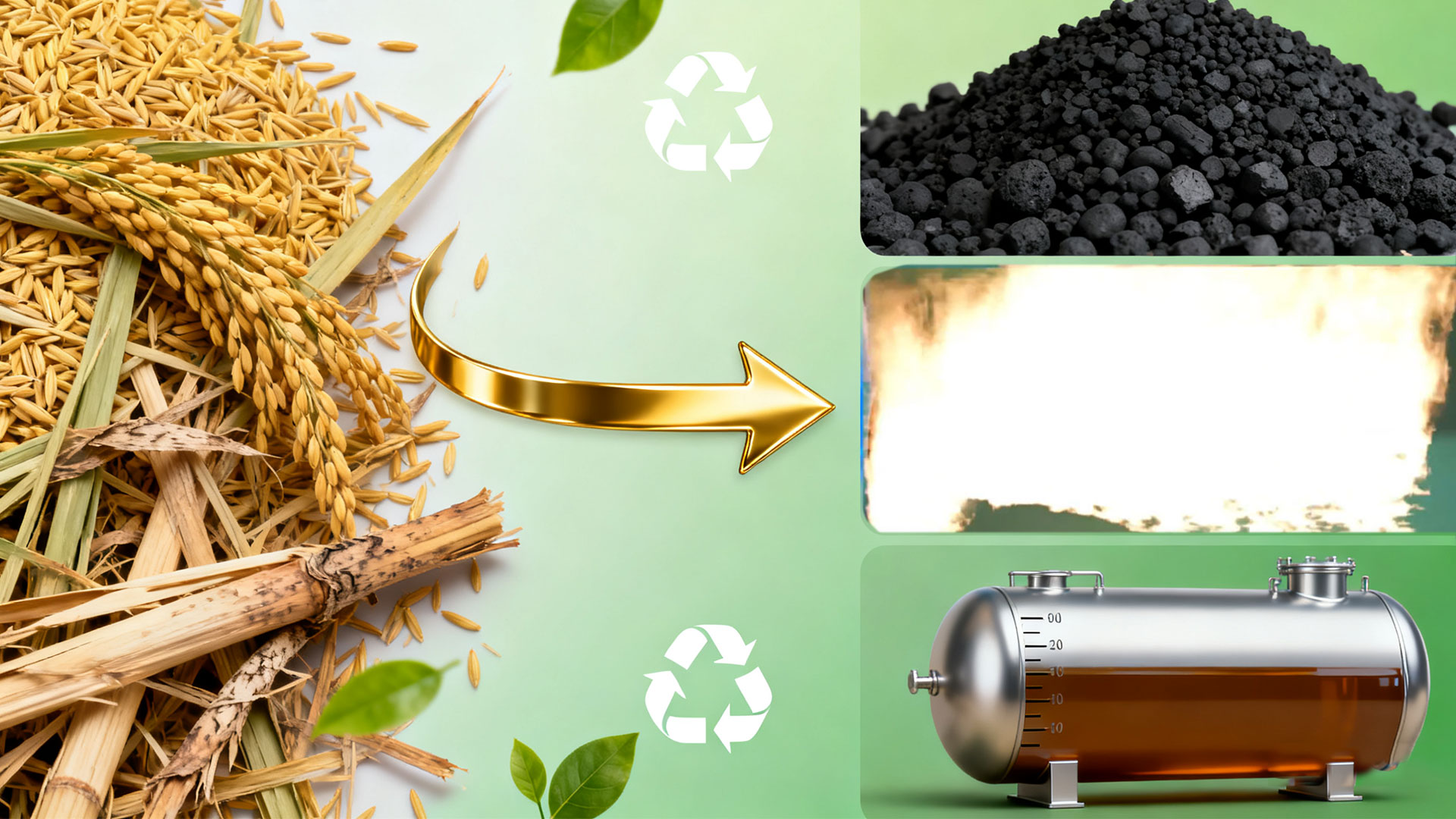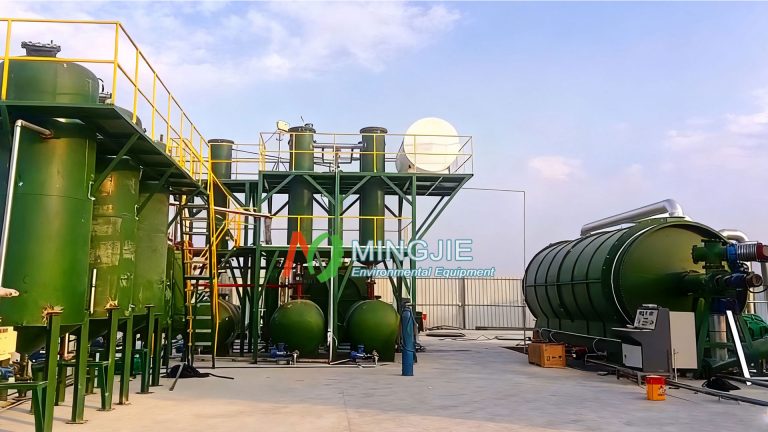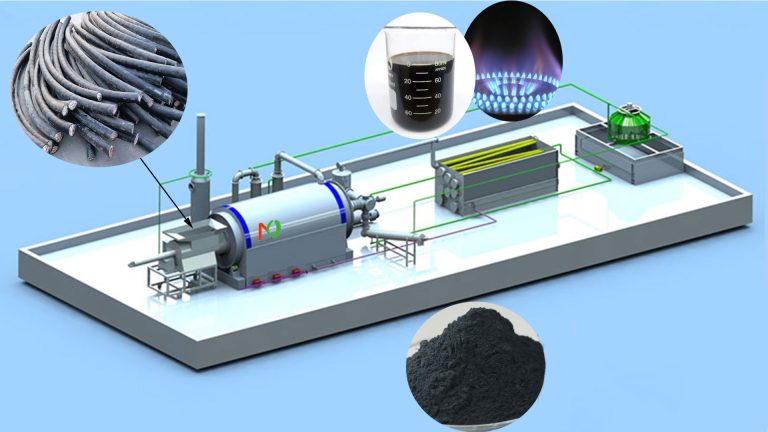Biomass waste disposal by pyrolysis technology is a highly promising sustainable development solution. It offers significant advantages and value in addressing global environmental challenges and energy crises. Biomass pyrolysis equipment can convert waste biomass into high-value-added products: biochar, bio-oil, and syngas.
The biomass waste disposal is becoming a critical issue on the path to global sustainable development. According to statistics, billions of tons of biomass waste are generated globally each year. This includes agricultural waste (straw, fruit shells, livestock and poultry manure), forestry residues (branch, bark, sawdust), and municipal organic waste (kitchen waste, garden trimmings).
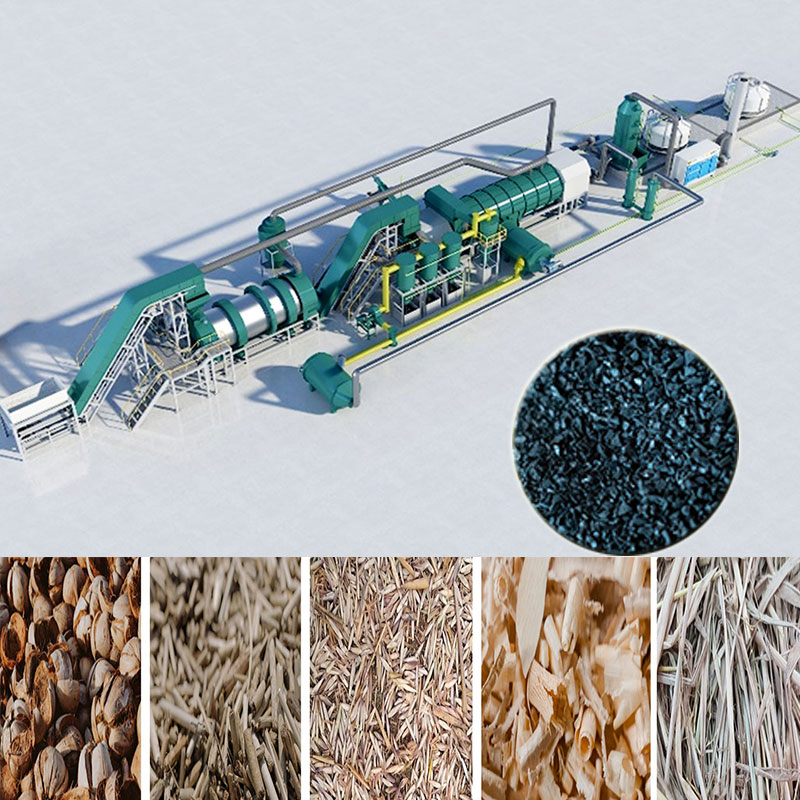
Traditional biomass waste management methods, such as landfilling and incineration, are increasingly problematic. Landfilling wastes land resources and pollutes soil and groundwater. Incineration releases large amounts of greenhouse gases and harmful pollutants, exacerbating global climate change and air pollution.
The biomass pyrolysis process achieves waste reduction, harmlessness and energy conversion, providing a feasible path to solving the energy crisis.
Pyrolysis Biomass Waste Disposal Project Application
To address the dual challenges of agricultural waste disposal and carbon reduction, Hokkaido, Japan, launched the Agricultural Biomass Pyrolysis Carbonization Project in 2020. The pyrolysis biomass waste disposal project aims to convert agricultural waste into high-quality biochar through pyrolysis carbonization technology. This will achieve carbon sequestration while promoting the recycling of agricultural resources.
The biomass waste disposal pyrolysis project utilizes low-temperature, slow pyrolysis carbonization technology. This technology operates at relatively low temperatures (350-450°C) and long residence times (2-4 hours) in an oxygen-deficient environment. Unlike fast pyrolysis, slow pyrolysis prioritizes the production of stable biochar with a high carbon content.

The core pyrolysis equipment of biomass pyrolysis project is a rotating pyrolysis reactor. The furnace is constructed of heat-resistant stainless steel (310S), capable of withstanding temperatures up to 800°C and exhibiting excellent corrosion resistance. The internal rotating drum is equipped with a lifting plate to ensure even heating and agitation of the biomass waste during rotation.
In addition, the biomass waste disposal project is equipped with a highly efficient purification system. A cyclone separator removes over 90% of dust from the pyrolysis gas, and a scrubber (using alkaline water as an absorbent) effectively removes tar and acidic components from the gas.
The purified pyrolysis gas has a calorific value of approximately 12-15 MJ/Nm³, comparable to low-calorific-value natural gas. It provides a stable heat source for the pyrolysis carbonization furnace.
Environmental Benefits
Since its official operation in 2021, the biomass pyrolysis project has achieved significant environmental benefits.
Carbon Sequestration: The biomass waste disposal pyrolysis project processes 7,200 tons of agricultural waste annually, producing approximately 2,200 tons of biochar. Each ton of biochar sequesters 1.8-2.2 tons of CO2 equivalent. Based on this calculation, the biochar production project can sequester approximately 4,000-4,800 tons of CO2 equivalent annually. When applied to local farmland, the biochar’s stable carbon structure can remain in the soil for decades to centuries, achieving long-term carbon sequestration.
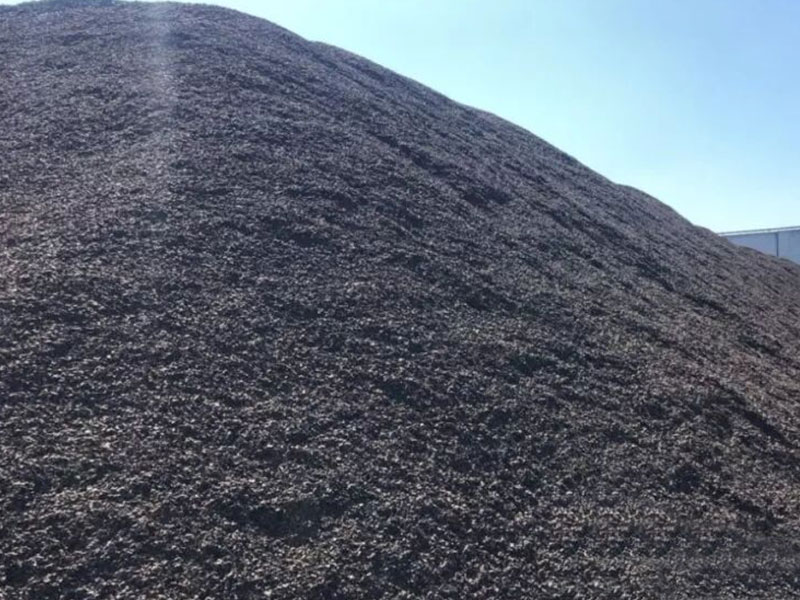
Reduced Greenhouse Gas Emissions: By replacing traditional waste disposal methods, the biomass pyrolysis project reduces annual emissions by 1,500 tons of CO2 equivalent (from open burning) and 800 tons of CO2 equivalent (from methane released by natural decomposition). Furthermore, the project’s energy self-sufficiency reduces external natural gas consumption by approximately 100,000 standard cubic meters annually, further reducing CO2 emissions by 200 tons per year.
Improved air quality: Eliminating open burning of agricultural waste has reduced particulate matter emissions by 65 tons annually. Furthermore, emissions of harmful gases have decreased annually.
Economic Benefits
The biomass waste disposal by pyrolysis carbonization project has brought tangible economic benefits to local farmers and related industries. Including increased farmer income, revenue from biochar sales, and the development of related industries.
Agricultural Benefits
The application of biochar produced by the biomass pyrolysis project has significantly improved local agriculture. Applying the biochar to the soil has improved soil physical and chemical properties, increased crop yields, and reduced heavy metal pollution.
This case study provides valuable experience for other biomass waste reduction challenges around the world. With the continuous advancement of pyrolysis carbonization technology and the growing emphasis on carbon neutrality, biomass carbonization plant is expected to be more widely used in agriculture and forestry. This will make greater contributions to global environmental protection and sustainable development.

